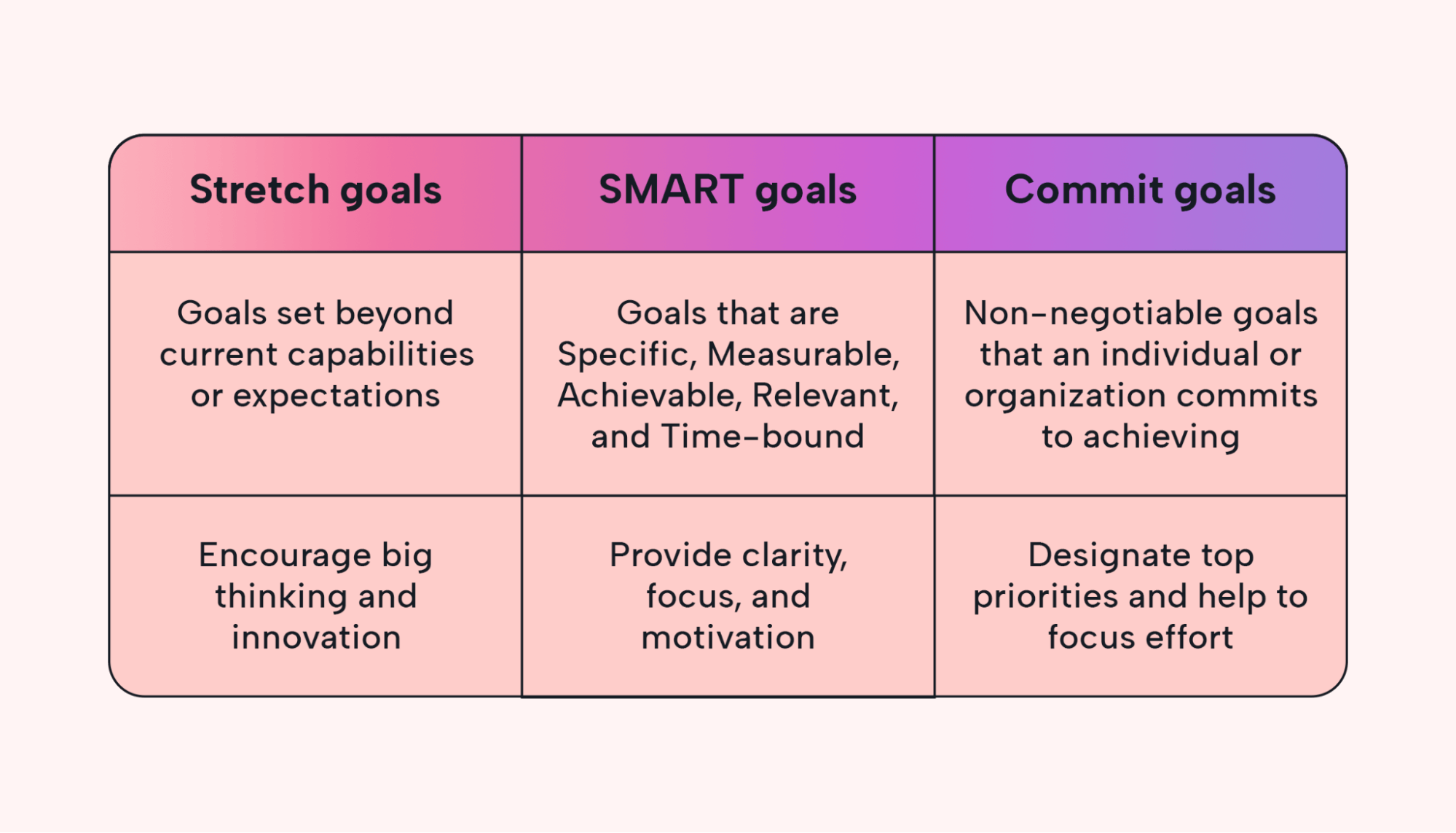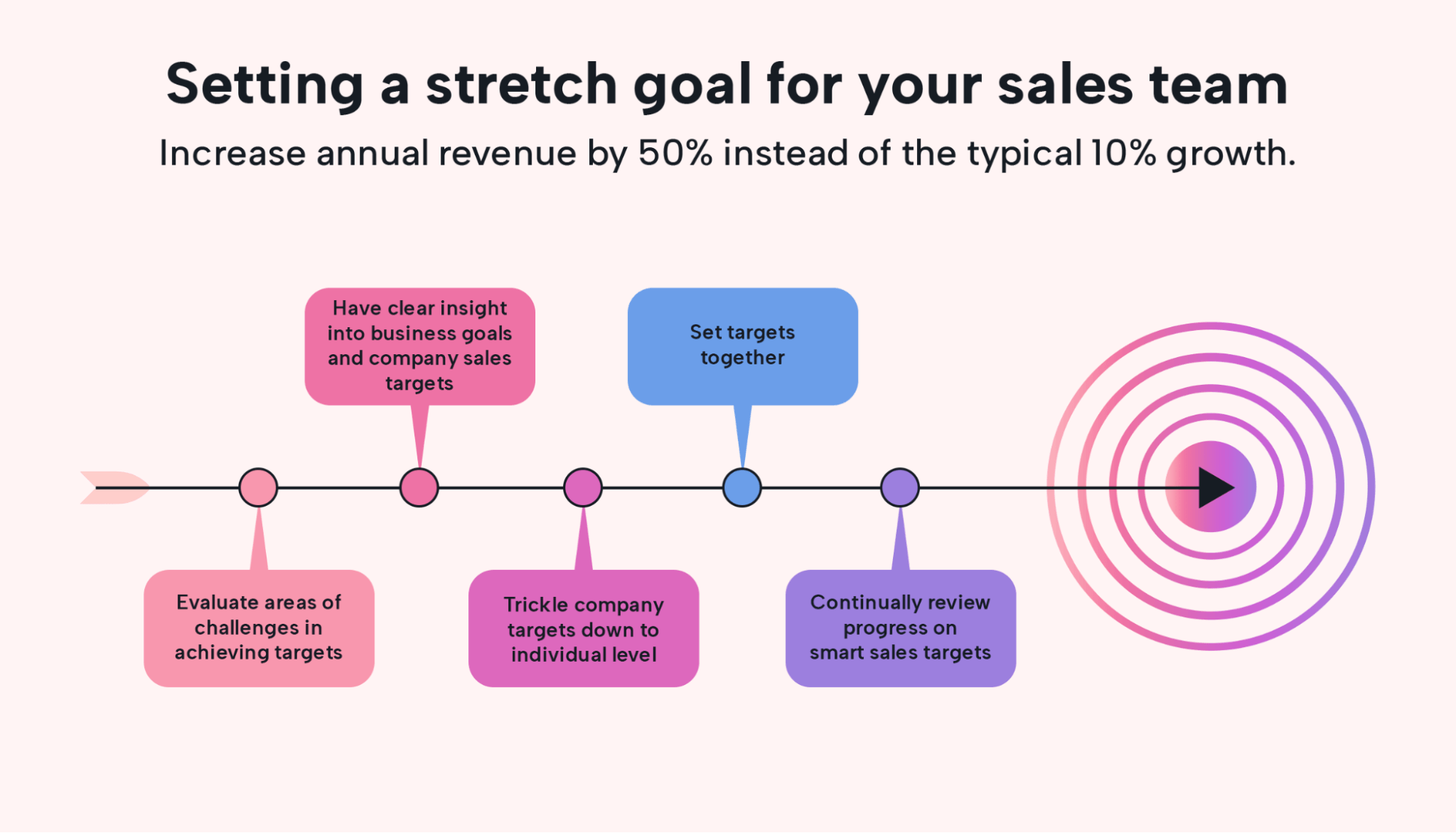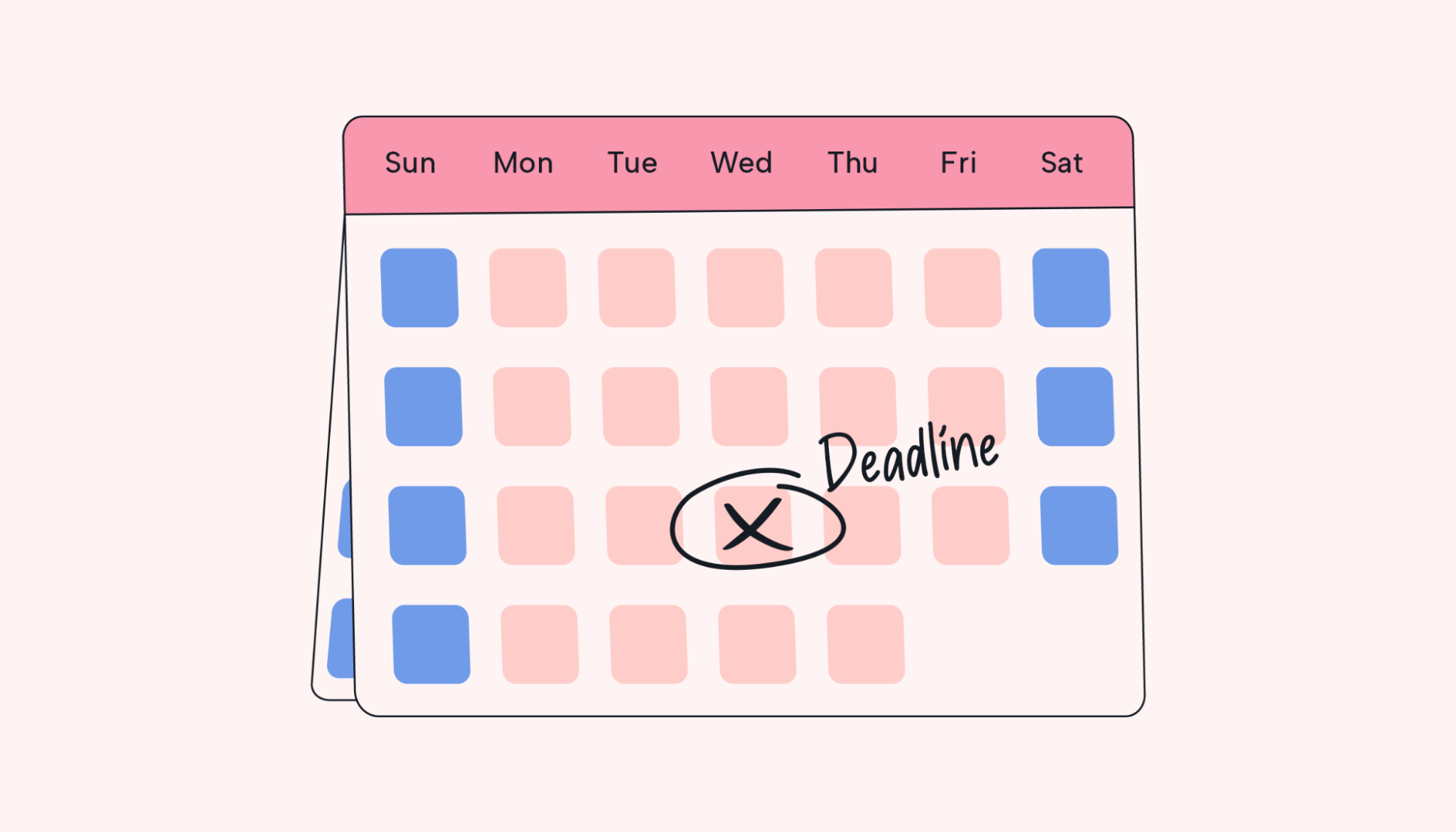Imagine setting a goal so lofty that it feels almost out of reach. Yet, it’s this very magnitude that sparks innovation, resilience, and exponential growth.
Welcome to the world of stretch goals.
Stretch goals aren’t mere checkboxes on a to-do list or mundane targets in a planner. They are aspirational visions that pull you out of your comfort zone, encouraging you to venture into uncharted territories.
In this article, we explain what stretch goals are and offer practical examples and tips for integrating them into your goal-setting journey.
What is a stretch goal?
A stretch goal is an ambitious and challenging target or objective that goes beyond what is typically considered achievable or expected. Unlike regular or incremental goals, which can be easy to achieve, stretch goals are set to push individuals, teams, or organizations outside of their comfort zones.
Stretch goals inspire you to innovate and strive harder than you might have with more modest aims. The idea is that even if you don’t fully achieve a stretch goal, the momentum and effort you put in trying to reach it can lead to substantial improvements.
Essentially, if you work toward a stretch goal, you’ll stretch your limits. Doing this might be uncomfortable. But it also opens the door to far higher levels of success than you ever could have achieved with goals that are within reach.
Stretch goals vs. SMART goals vs. commit goals
Goal-setting is an essential tool for success. But with terms like “stretch goals,” “SMART goals,” and “commit goals” floating around, it can get a bit confusing. Each of these goal types serves a different role on the road to success.
 |
Looking at how stretch goals compare to other types of goals can help you determine when to use them. Let’s break down these three common goal-setting methodologies so you can understand their characteristics and purpose.
Stretch goals
Stretch goals are ambitious. They push an individual or organization beyond their comfort zone. They seem somewhat out of reach but are not impossible.
Purpose: To encourage thinking big, inspire creativity, and achieve more.
Pros: Can lead to breakthrough performance and innovation.
Cons: Can demotivate if too unrealistic and continuously feel unattainable.
SMART goals
The acronym SMART stands for Specific, Measurable, Achievable, Relevant, and Time-bound. This framework is a systematic way to set goals.
While stretch goals are about pushing boundaries, SMART goals are more about clarity, achievability, and trackability. Stretch goals can potentially be turned into SMART goals if broken down into smaller, specific milestones.
Purpose: To ensure that goals are clear, realistic, and trackable.
Pros: Provides clarity, focus, and motivation. Easy to track and determine when they’ve been achieved.
Cons: Can sometimes lack the ambition of stretch goals, which may lead to incremental or limited thinking.
Commit goals
These are goals that an individual or organization commits to achieving without any conditions. The mindset is to “do whatever it takes” to reach them.
Stretch goals are ambitious but not always mandatory to reach, whereas commit goals are seen as non-negotiable.
Purpose: To ensure absolute accountability and dedication.
Pros: Generates strong drive and determination. Creates a sense of obligation to deliver.
Cons: Can lead to burnout or undue pressure if not managed properly.
18 stretch goal examples
Here are some examples of stretch goals in different contexts to inspire you:
Business and sales
1. Increase annual revenue by 50% instead of the typical 10% growth.
2. Double the number of active users on a platform within six months.
3. Enter three new international markets in a year when traditionally, the company enters one new market every two years.
 |
Product development and technology
4. Develop and launch two new major product features — instead of the usual one — within the next quarter.
5. Reduce software bug reports by 90% in the next six months.
6. Achieve 99.999% system uptime over the next year.
Education and personal development
7. Read 50 books in a year instead of the usual 12.
8. Learn and become fluent in a new language within a year.
9. Complete a full online course or degree program in half the time it typically takes.
Fitness and health
10. Run a marathon in under three and a half hours when one’s best time is currently four hours.
11. Double the amount of weight lifted in key exercises within six months.
12. Achieve a particularly challenging yoga pose or sequence in a shorter period than typically expected.
Environmental and social impact
13. Plant one million trees in a year instead of the annual target of 200,000.
14. Reduce organizational carbon emissions by 60% in two years.
15. Increase charitable donations or volunteer hours by 200% in the next fiscal year.
Marketing and engagement
16. Achieve 1 million website visitors in a month when the current monthly average is 500,000.
17. Double the company’s social media followers or engagement rate in three months.
18. Launch and get 100,000 sign-ups for a new webinar or online event series within a month.
How to write stretch goals
Only 43% of people set difficult or audacious goals. But here’s the really interesting part: those who do venture into setting challenging goals are 34% more likely to love their jobs. This highlights the value of setting stretch goals and pushing your limits.
 |
Here’s a step-by-step guide to help you draft your own stretch goals that strike a balance between ambition and feasibility:
1. Identify your baseline
Understand your current performance or situation. Look at current metrics, achievements, or the status quo. For example, if you’re part of a sales team, how many units do you currently sell in a typical month?
2. Visualize a bold future
Think big. Imagine a situation where you’re significantly exceeding current expectations. For instance, if you typically sell 100 units a month, what would it look like if you sold 250 or 300?
3. Break it down
Once you have a broad stretch goal in mind, break it down into smaller, more specific milestones or components.
If your goal is to double the user base of your app, milestones could include increasing marketing spend, launching in new regions, or introducing new features.
4. Identify resources and constraints
Determine which resources (for example: time, money, and people) you’ll need to achieve this goal. This step helps to ensure that while the goal is a stretch, it’s not entirely out of the realm of possibility. Understand potential constraints or barriers, and think about how these things can be addressed or mitigated.
5. Add a time frame
Stretch goals should have a clear timeframe. Decide whether this is a quarterly, yearly, or multi-year goal. Then, develop a timeline that creates urgency and focus.
 |
6. Write down the details
Document the specifics you established in steps one through five in a clear and concise way. For example: “By the end of Q4 2023, we aim to have increased our monthly sales units from an average of 100 to 250.”
7. Stay flexible
Understand that stretch goals, by nature, are challenging. So, it’s okay if you don’t always meet them. The aim is to push the boundaries of what’s possible. Be ready to adjust and adapt based on progress and any changing circumstances.
8. Review and reflect
Periodically review your progress toward your stretch goal, and celebrate the milestones you achieve along the way.
Then, after the time frame that you initially set passes, reflect on the progress you’ve made. Even if you haven’t achieved the goal in its entirety, there will be valuable lessons and achievements to acknowledge.
Achieve your stretch goals with Motion
While stretch goals are ambitious and aim to push limits, they should also be somewhat attainable. Setting them too high can be demotivating, but when set just right, they can inspire innovation and exceptional effort.
What’s more, achieving stretch goals often requires more resources than initially predicted. As a result, without proper planning and allocation, resources can quickly become exhausted. There’s a subtle art to resource allocation and management — a crucial part of achieving any goal.
Motion offers tools for tracking and visualizing progress, allowing your team to set realistic milestones within their stretch goals by breaking them down into bite-sized chunks. This enables gradual progression and makes seemingly massive objectives more approachable.
You can easily lay out step-by-step action plans using Motion’s intuitive interface. Visually representing tasks eliminates ambiguity and ensures everyone on the team has a clear understanding of their role and the bigger picture.
Motion’s AI features also streamline task and time management and reduce the need for manual intervention. Project managers and teams can make the most out of the resources they have, ensuring every effort is directed toward reaching those ambitious objectives.
Don’t let common challenges deter you from reaching your stretch goals. Equip yourself with the right tools to navigate them successfully.
Sign up for Motion’s 7-day free trial and give your goals the momentum they deserve.





